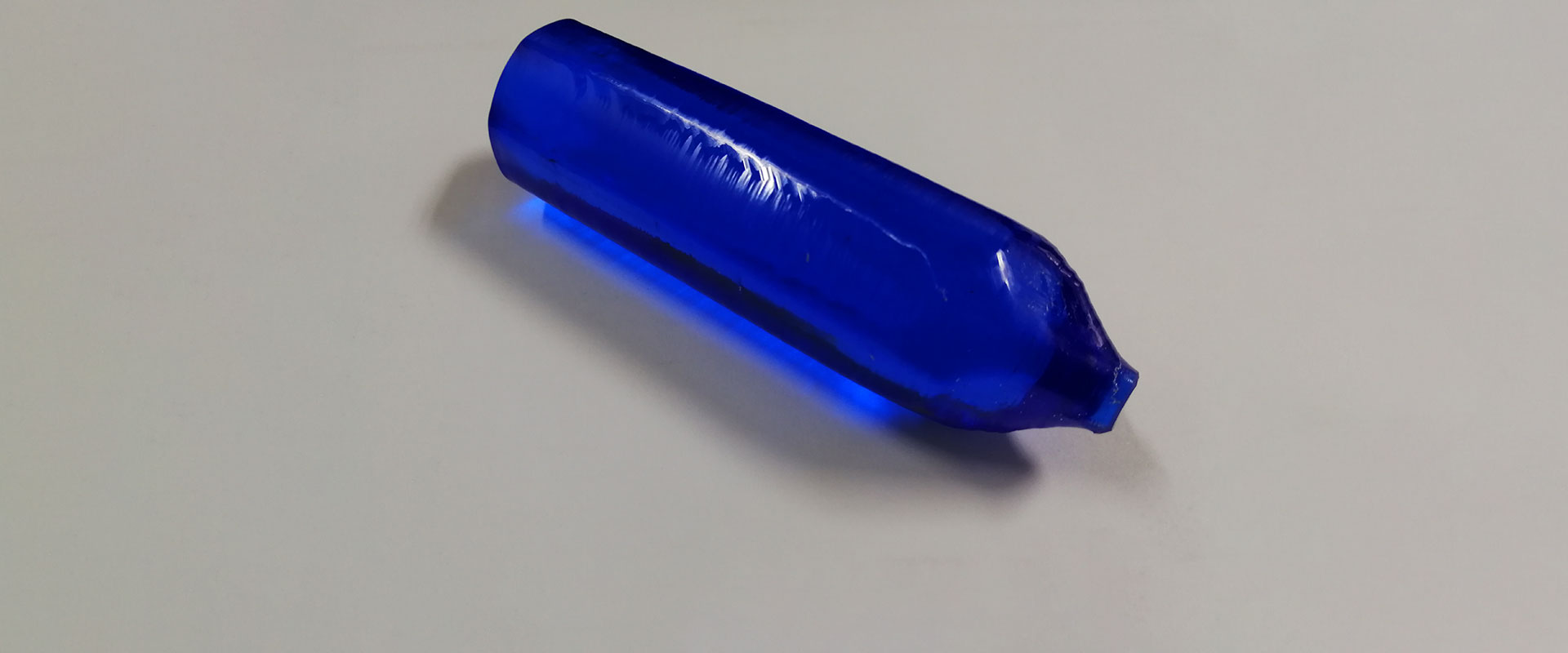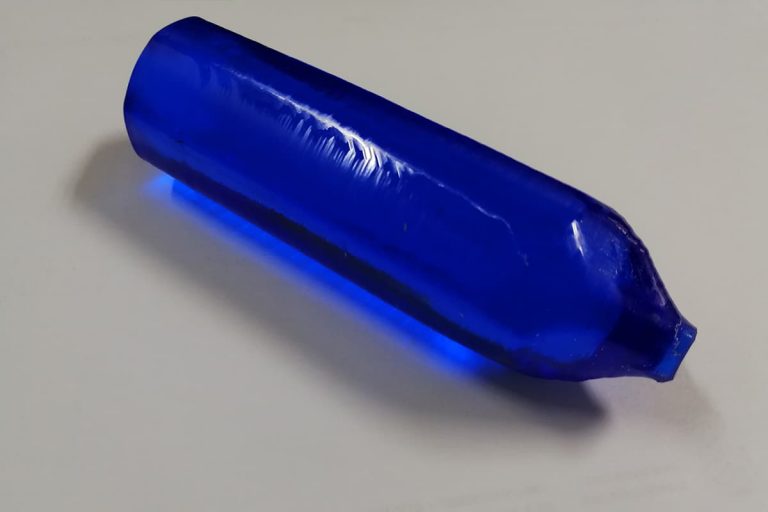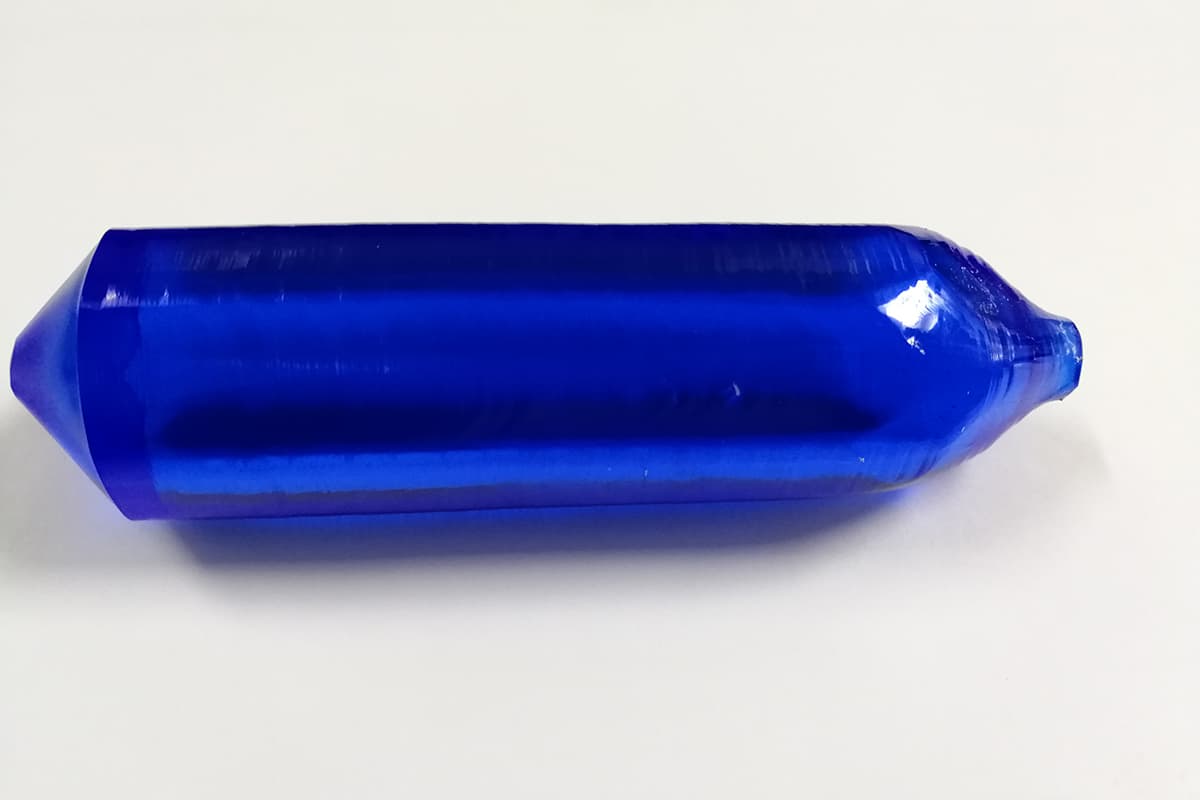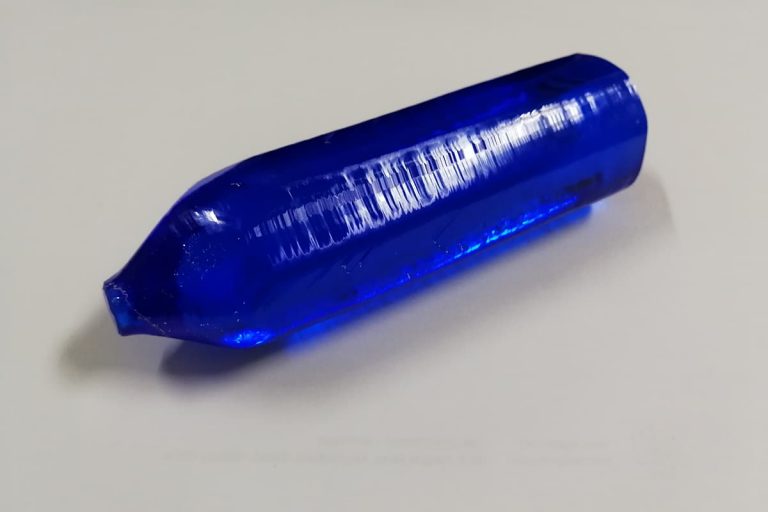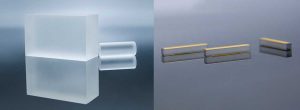In the production of Co-doped spinel crystals, the most commonly used method is the Czochralski technique.
The Czochralski method starts with heating and melting the feed material in a platinum or Iridium crucible. At an appropriate temperature, the seed crystal is dipped from top into the liquid surface of the melt, so that the melt could crystallize at the end of the seed. Then slowly rotate and pull up the seed crystal. The crystal gradually grows from the end of the seed crystal, and finally becomes the bulk crystal we need. The following shows the specific equipment and processes of the method.
1.Equipment
The main equipment used in the production is the monocrystalline furnace. Figure 1 is the monocrystalline furnace we use when preparing the crystal growth, and Figure 2 is a structural diagram of the furnace. The device is composed of five parts as follows:
(1) Heating system
The heating method used is heating by induction, which uses radio frequency induction coils for temperature measurement and control. The temperature control system we use is called EUROTHERM. The advantage of this heating method is that it has accurate temperature control and can grow crystals in a clean environment.
(2) Crucible
The crucible we use is an Iridium crucible, and a polished gemstone is added to the observation window of the insulation cover.
(3) Transmission system
The transmission system is composed of a seed rod and a lifting system, which can help us obtain a stable rotation and lifting.
(4) Atmosphere control system
The system consists of a vacuum device and an inflation device. Because the crucible is made up with Iridium, it could be easily oxidized, which wastes a large amount of Iridium. Therefore, we use inert gas (high-purity nitrogen) as our atmosphere for crystal growth.
(5) Afterheater
The afterheater uses an oxide with high melting point placed on the upper part of the crucible. The grown crystal gradually enters the afterheater. And after the growth is completed, the crystal is cooled to room temperature in the afterheater. The main function of the afterheater is to adjust the temperature gradient between the crystal and the melt, to control the diameter of the crystal, and to prevent the crystal from cracking due to the overcooling of components.
2.Preparation of Raw Materials
(1) Selection of seed crystal
The quality of the seed crystal will have a huge impact on the quality of the final crystal we grow. Based on the principal that the single crystal is grown using the seed crystal of the same base, we choose high-quality MgAl2O4 in the <111> direction as our seed crystal.
(2) Selection of raw materials for reaction
For the raw materials needed for reaction, we choose high-purity MgO, Al2O3 and Co3O4 powders. These powders must be dried, weighed, mixed, milled, pressed, and pre-fired before being put into the Iridium crucible for crystal growth.
3.Production Process
(1) Furnace Installing
We first add processed high-purity raw materials to the crucible, and then assemble the materials of temperature field in sequence. In order to ensure the symmetrical temperature distribution in the furnace, when installing the furnace, it is necessary to ensure that the center of the induction coil, the center of the quartz insulation cover, the center of the crucible and the center of the seed crystal are on a vertical line. The design of the temperature field is the basis for obtaining high-quality crystals, so it is also important to choose the right temperature field environment. It is quite essential to choose a suitable heat shield and adjust the temperature gradient at the solid-liquid interface and the entire growth chamber by covering Zirconia rings of different diameters.
(2) Furnace inflation
We first pump the furnace into vacuum, and then turn on the mechanical pump and the diffusion pump successively until the pressure in the furnace was about 10-3 Pa, and then fill the furnace with high-purity Nitrogen as a protective gas, and make the pressure rise to about 0.025MPa. The inflation process should be slow to avoid blowing up the insulation powder in the furnace which will pollute the raw materials.
(3) Heating materials
After the furnace is installed and inflated, we turn on the intermediate frequency power supply to increase the temperature and melt the materials. At the same time, the crystal rotation is turned on to make the temperature distribution in the furnace uniformly distributed. After the materials get completely melted, we carefully observe the state of the melt flow and adjust the power so that the melting temperature is near the crystal melting point. At a constant temperature, we prepare to dip the seed crystal.
(4)Toasting crystal
We increase the power to melt the reactants completely and keep the temperature constant for a period of time, then dip the seed crystal close to the liquid surface and let the seed crystal preheat for a few minutes. Toasting crystal can remove volatile impurities on the surface of the crystal, and can also reduce the thermal harm to the crystal.
(5) Planting and necking
When the temperature is stable, the seed crystal can be brought into contact with the liquid surface. At this time, the temperature should be carefully controlled. When the seed crystal is in good contact with the liquid surface, it can be slowly pulled up. As the seed crystal rises, the melt starts to crystallize on the surface of the seed. This process is called planting. Necking refers to slightly lowering the reaction temperature after planting, increasing the pulling speed, and pulling out the section that is thinner than the seed crystal. The purpose of this process is to eliminate polycrystalline caused by poor contact and eliminate the dislocation extension between the seed crystals. The neck should be longer than 20mm, and necking can also eliminate crystallographic defects at the lower end of the seed, which is also an important step in growing high-quality crystals.
(6) Shoulder-expanding
After the necking process is completed, the temperature in the furnace is slightly reduced. And after the seed reduces to the required size (about Φ3-4mm), it will undergo the automatic growing process. We slowly lower the temperature to increase the degree of subcooling. Under a certain lifting speed, the diameter of the crystal grows, which is called the shoulder-expanding stage. This is also a key step, in which defects such as dislocations might occur, and it will affect the quality of the entire crystal. After the crystal grows to the right size, it can enter the equal diameter growth stage.
(7) Equal diameter
After the crystal growth is relatively stable, we use an electronic scale to keep the diameter constant. We keep the pulling speed between 1.8 and 2.2 mm/h and change the rotation speed between 3 and 40 rpm.
(8) Lift off and finish
We use the transmission system to slowly pull the grown crystal out of the liquid surface, and finally raise the temperature slightly and reduce the pulling speed to gradually reduce the radius of the crystal.
(9) Post-processing
Annealing treatment is carried out after the end of Lift off and finish, and the temperature is slowly decreased through the temperature lowering procedure. The cooling time is generally set to 24 hours. After the crystal drops to room temperature, the furnace door can be opened to remove the crystal. Annealing can partially eliminate the thermal stress formed by the crystal due to the temperature gradient, color defects formed during the crystal growth and improve the performance of the crystal.
4.Advantages of the Production of Co-doped spinel by the Czochralski method
In the production process of Co-doped spinel, we use the Czochralski method for crystal growth, which has the following advantages:
(1) Using the Czochralski method can facilitate precise control of growth conditions.
(2) Using the “reflow” and necking” processes to reduce the dislocation in the crystal and improve the integrity of the crystal.
(3) The growth can be directly observed during the process, which provides favorable conditions for controlling the shape of the crystal.
(4) The crystal grows on the surface of the melt and does not contact the crucible, which can significantly reduce the stress of the crystal and prevent the parasitic nucleation of the wall of the crucible.
Czochralski method is simple in structure and can produce Co-doped spinel with higher quality, which makes it the current mainstream growth method. In addition, the temperature gradient method and the top seed crystal technology also provide more directions for the Co-doped spinel growth field. The gradual maturity of the Co-doped spinel growth technology will definitely meet the needs of more people.

